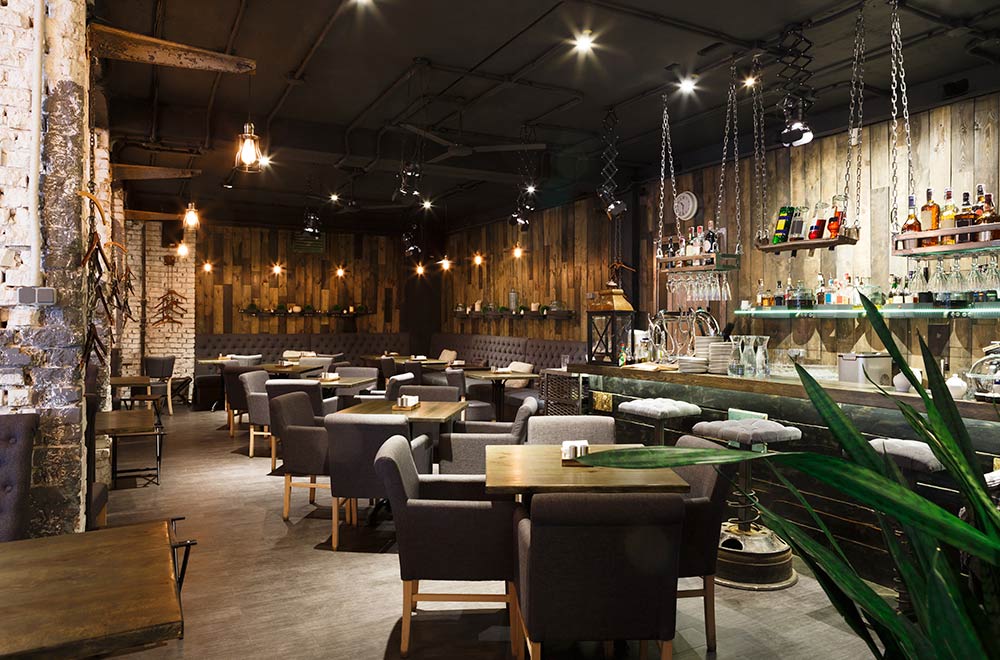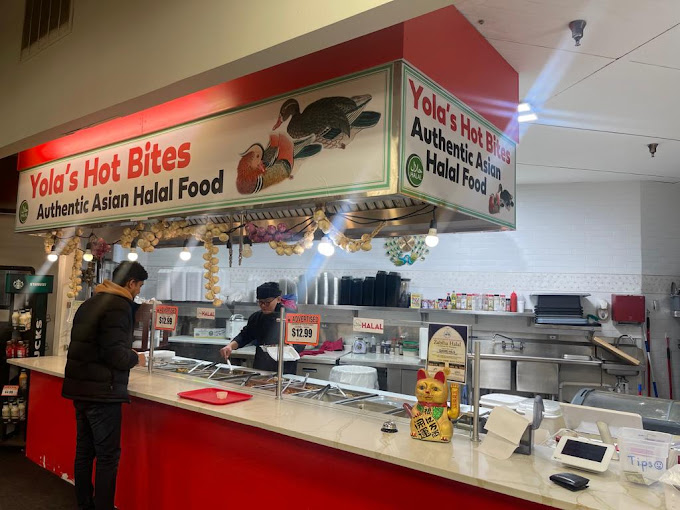Romantic Restaurants Islamabad: Ideal Dining Destinations for Couples
Romantic Restaurants Islamabad: Ideal Dining Destinations for Couples
Blog Article
Savor Authentic Eastern Cuisine With a Pan-Asian Spin for a Culinary Experience
Starting a cooking journey with genuine Eastern food, boosted with a Pan-Asian spin, offers a distinct possibility to check out the abundant tapestry of tastes that define the region's varied culinary practices. This experience welcomes you to relish the splendid balance of tastes-- pleasant, salty, spicy, and sour-- balanced by fragrant herbs and seasonings. Picture the cutting-edge blend of Thai curry and ramen or the unforeseen joy of sushi burritos. As you consider these luring meals, take into consideration the cultural stories and historic influences that form them, each bite using a tale waiting to be uncovered.

Exploring Pan-Asian Flavors
In the realm of international gastronomy, Pan-Asian cuisine stands apart for its remarkable variety and the harmonious interplay of flavors from different Eastern cultures. This cooking method celebrates the unique active ingredients and rich customs discovered throughout the continent, creating a tapestry of tastes that is both rewarding and appealing. Trick to Pan-Asian cuisine is its capacity to stabilize contrasting flavors-- sweet, salty, spicy, and sour-- while highlighting the quality and high quality of each ingredient.
From the umami-rich soy sauce of Japan to the intense chili peppers of Thailand, Pan-Asian cuisine provides a considerable scheme of flavors. These aspects are often combined in innovative means, enhancing dishes with layers of intricacy. For circumstances, using great smelling natural herbs such as lemongrass and cilantro, common in Vietnamese and Thai food, includes a refreshing brightness to dishes, while the incorporation of coconut milk delivers a velvety, rich structure.
The focus on fresh fruit and vegetables and aromatic seasonings makes sure that each dish is not just a banquet for the palate however additionally for the senses. Pan-Asian food invites restaurants to begin on a culinary journey, checking out the huge and differed landscapes of Asian gastronomy with every bite.
Combination Meals to Try
While Pan-Asian cuisine is commemorated for its conventional flavors, the contemporary cooking landscape is increasingly embracing combination meals that mix these timeless elements with influences from various other regions. This ingenious approach not only honors the abundant heritage of Eastern culinary arts but also presents novel preference experiences that attract modern tastes.
A prime instance of such a combination meal is the Korean-Mexican taco, where seasoned bulgogi beef is covered in a warm tortilla, topped with kimchi and a zesty gochujang-infused salsa. This combination marries the bold, full-flavored tastes of Korea with the vibrant, fresh components of Mexican cuisine. Likewise, sushi burritos have acquired appeal, integrating the delicate artistry of Japanese sushi with the hearty, hand-held benefit of a burrito, often featuring fusion components like tempura shrimp and avocado with a drizzle of wasabi mayo.
An additional notable recipe is Thai curry ramen, which instills the creamy, aromatic spices of Thai curry right into the soothing broth of typical Japanese ramen, producing a harmonious mix that tantalizes the detects. These blend recipes prolong past simple novelty; they stand for a culinary dialogue between cultures, motivating expedition and innovation on the planet of Pan-Asian food.
Necessary Components and Spices
To really appreciate Pan-Asian food, one should understand the important components and spices that create its foundation. This varied cooking design attracts from an abundant tapestry of Oriental customs, utilizing a harmonious blend of structures and flavors. Key components consist of soy sauce, fish sauce, and oyster sauce, which give a tasty umami deepness important to Asian meals. Corresponding to these are rice vinegar and mirin, providing a delicate level of acidity and sweetness.
Aromatic aspects are critical, with ginger, lemongrass, and garlic being ubiquitous across different Pan-Asian recipes. These active ingredients supply an aromatic base that boosts the complexity of flavors. Spices such as star anise, cardamom, and cinnamon present warmth and personality, echoing impacts from areas like China and India.

Food Preparation Strategies and Tips
Grasping the art of Pan-Asian cuisine requires experience with its distinct cooking strategies, each contributing to the vibrant tapestry of tastes this culinary practice is commemorated for. Central to these approaches is the stir-fry, a quick cooking strategy that preserves the dietary integrity and brilliant shades of ingredients. Using a wok, the stir-fry technique permits even heat circulation, essential for achieving the characteristic structure and taste balance of Pan-Asian meals.
One more essential strategy is steaming, particularly common in Chinese food. This mild technique preserves the all-natural flavors and nutrients of ingredients, making it suitable for fish and shellfish and vegetables. Dumplings, a precious staple, often take advantage of steaming, resulting in soft, delicious textures.
Cooking, additionally indispensable, presents great smoky depths to recipes such as Korean bulgogi straight from the source or Japanese yakitori (asian fusion restaurant). This method commonly involves marinading components, enabling flavors to permeate deeply before cooking over an open flame or warm plate
Lastly, grasping the art of balancing flavors-- wonderful, sour, salty, bitter, and umami-- is essential. Properly layering these elements can boost a recipe from common to amazing, offering a facility and pleasing culinary experience that personifies the essence of Pan-Asian cuisine.
Dining Experiences Worldwide
Around the world, Pan-Asian food supplies an unrivaled eating experience, celebrated for its rich tapestry of flavors and dynamic discussions. This cooking phenomenon has actually gone beyond cultural boundaries, recording the hearts and palates of food fanatics worldwide. In multicultural cities like New York, London, and Sydney, Pan-Asian dining establishments serve as melting pots where culinary practices from Thailand, Japan, China, and past assemble, supplying restaurants with a diverse mix of recipes that highlight the region's variety.
The worldwide allure of Pan-Asian cuisine hinges on its ability to use both credibility and innovation. Cooks masterfully wed traditional ingredients such as lemongrass, soy sauce, and miso with contemporary methods, resulting in recipes that are both refreshingly new and acquainted. This blend enables restaurants to begin on a culinary trip that values heritage while embracing modernity.
In addition, dining experiences are raised through attentively designed environments that mirror the ethos of Pan-Asian visual appeals. From minimal Japanese-inspired interiors to lively Thai-themed rooms, each dining establishment uses an unique ambiance that matches the culinary offerings. Therefore, patrons are not merely taking in a meal however partaking in a cultural experience, making Pan-Asian eating a really worldwide phenomenon.
Conclusion
The expedition of Pan-Asian food supplies an extensive understanding of the detailed interaction of tastes and culinary customs throughout Asia. By accepting combination recipes such as Thai curry ramen and sushi burritos, the culinary journey not only highlights the adaptability of traditional active ingredients yet additionally showcases cutting-edge contemporary techniques. This gastronomic adventure, improved by cooking approaches and necessary flavors, gives a special opportunity to value the multiculturalism and culinary creativity that define Pan-Asian food on a worldwide scale.
Embarking on a culinary trip through genuine huddle house near me Oriental food, improved with a Pan-Asian spin, uses a special chance to explore the rich tapestry of tastes that define the region's varied culinary customs.In the world of worldwide gastronomy, Pan-Asian cuisine stands out for its impressive diversity and the harmonious interaction of flavors from various Eastern societies. Trick to Pan-Asian cuisine is sakana its capability to stabilize contrasting flavors-- sweet, salty, spicy, and sour-- while highlighting the quality and top quality of each ingredient.

Report this page